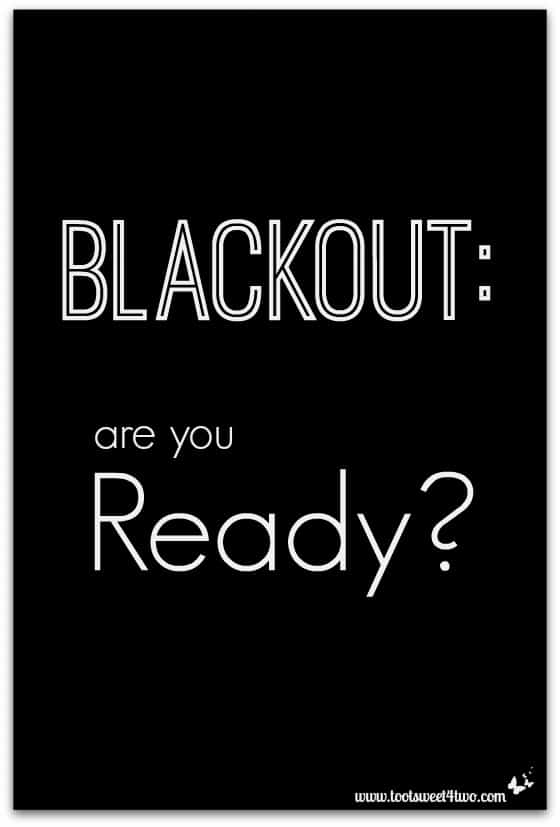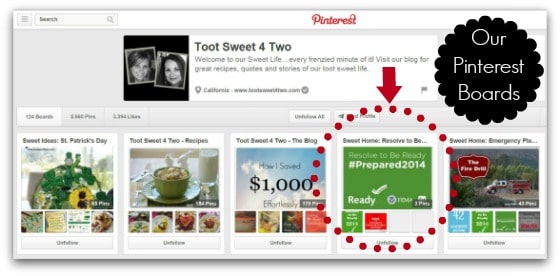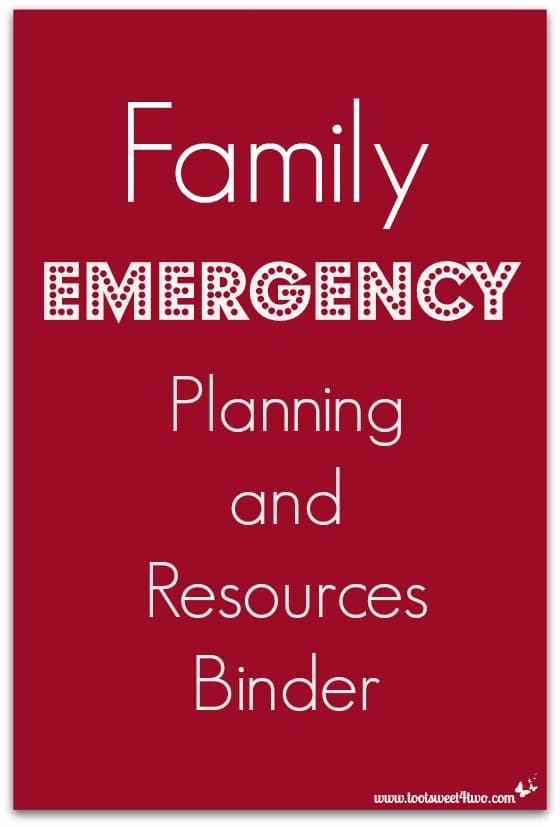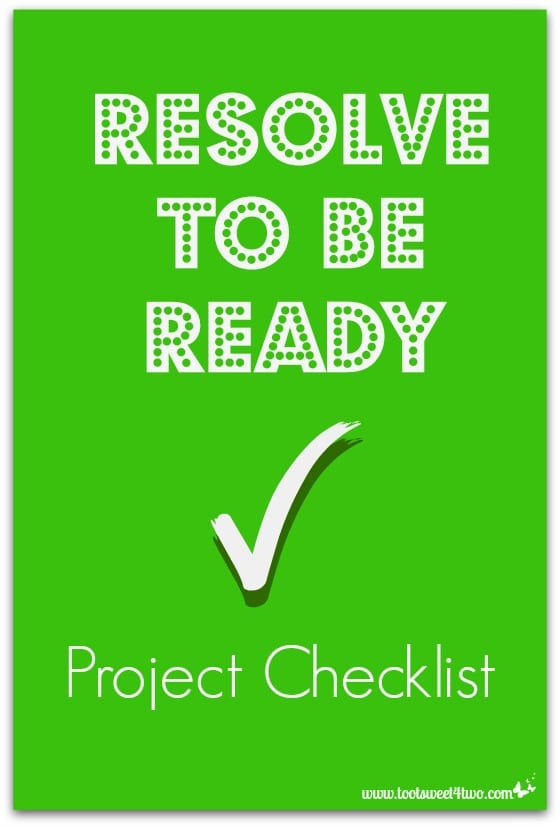
A strange thing happened this past Wednesday night. We had a blackout.
Sitting in my office, working at my computer, suddenly the power went down. The sound emanating from the house was a like a machine winding down and then, silence. Total, complete and utter silence.
We were consumed in darkness. A dark so black that I could see absolutely nothing.
And, we were consumed in silence. It’s amazing the sounds one is accustom to hearing – a house makes more noise than you realize; until it makes no sound at all.
It was the first time in my life that I experienced what it must be like to be totally blind. Because, when I close my eyes, I don’t see black – I see a reddish, beige, dark gray; what I assume are my eyes attempting to peer through my eyelids. But, I don’t see black. And this experience was the blackest of black. Ink. Midnight. Darker than a cloudy, dark night when not even the moon or stars shed an ounce of light.
I sat a moment, waiting. Waiting for the generator to kick in.
You see, when we moved back home 5 years ago, after losing our home in a wildfire the year before, I insisted that we buy a generator that would run our house. Not having a clue about the cost of a whole-house generator, I was shocked when we received a quote of $25,000. After some hemming and hawing, we bit the bullet and had the system installed.
After all, what good is having a sprinkler system installed in your house if the sprinklers won’t work in a power failure? That’s right…after quizzing my husband on how sprinklers work, I learned that while our sprinklers are gravity-fed by the 10,000 gallon water tank in our back yard (both building ordinance requirements in our county), they would not operate during a power failure because electricity pushes them down out of the ceiling.
And, we were having a power failure right at that moment. And, the generator didn’t kick in.
I yelled for Charlie, who was in the living room and he yelled back.
“Charlie!”
“I’m in the living room.”
“Why didn’t the generator kick in?”
“I don’t know; obviously something is wrong with the generator.”
“Stay there; I’ll come out there. I’ll find some candles.”
Charlie uses a mobility scooter and I didn’t want to run into him in the pitch black of our dark house. Because, well, that would hurt! {grin}
So, I got up, made my way to my office door and using my hands, started feeling my way down the hallway. The good news is that we don’t have clutter down our hallway, so I made it safely to the kitchen.
Rifling around in a drawer, I couldn’t find the candles I wanted. The ones right on top were red taper candles, leftover from Valentine’s Day. I didn’t want to light them and drip red candle wax on the floor.
I finally found a green pillar candle, but it was still in its wrapper from the store. And, in the dark, of course I could not find scissors. I managed to rip off just enough of the packing material to expose the wick.
Candle in hand, I felt my way through the kitchen to the kitchen drawer that had our lighter. Fumbling around in that drawer, I couldn’t find the lighter! Darn it! Where was that lighter? (BTW – later I found it in that very drawer; under pot holders!).
I felt my way across to the opposite side of our kitchen to a drawer that contained matches. Finally! Matches in hand, I strike one against the box and we have light. It’s amazing how much light emits from one solitary match when you are in total, complete pitch black darkness!
Candle lit, I tell Charlie that I’ll light the rest of the pillar candles and place them around the room. Just as I started to unwrap the other green pillar candles (I had 5, recently purchased for St. Patrick’s Day), the lights came on.
And, the sound was like a whirring engine starting up as the whole house came back to life.
I bet you are asking me (in your head, of course), why didn’t I just get flashlights?
Well, because I try to keep clutter at a minimum and attempt to “organize” our lives by putting things in specific places. In my attempt at organization, I had placed all the flashlights, together, in a drawer in the garage cabinets! And, trying to navigate around two cars, shelving, a whole-house water system, garbage cans, etc., in an all-consuming pitch black darkness to find my way to those drawers, seemed daunting and not safe.
So, guess what?
We now have our flashlights inside the house in strategic places scattered throughout the house! I have one in my office, there’s one in our bedroom, there’s one in our living room and there’s one in our garage right outside our back door, next to our water heater. All we have to do now is open the back door leading into the garage, feel the wall on the left, follow it down a little ways and it’s sitting on the platform that houses our water heater. No more fumbling around in the dark for candles and matches!
And, the next day, Thursday, we had a new battery installed on our generator. Strangely, we’d had a new battery installed less than a year ago when another power failure happened and the generator didn’t kick in! Fortunately for us, the generator’s semi-new battery was still under warranty and the power outage lasted less than 10 minutes.
I’m constantly presented “lessons” about how unprepared we are. It’s like the Universe is helping me along by giving me lessons on the steps I still need to take. You can read about some of these life “lessons” here: The Fire Drill and Knockin’ on Heaven’s Door.
Welcome to the second post in my new series, Resolve to Be Ready 2014. Fair warning: this is a long post. If you are a slow reader like me, it will take you about 15 minutes. If you are a fast reader, you can probably skim through it in about 8 minutes. If you don’t have time to read this today, do these two things:
- bookmark this by pinning it to your Pinterest board
- write a date and time on your calendar when you can devote the time to read this post so that you’ll remember to come back and read it!
For the next several years, on the 22nd of every month, I will post steps to propel me and participating readers forward in the emergency planning and preparedness process. If you missed the first post, I encourage you to take a few minutes and read it now. I’ll wait for you {grin}: Resolve to Be Ready 2014.
In that post, I assigned 6 very easy projects to do between January 22nd and today. Here they are to refresh your memory (in case you were one of our readers who DID read this post, you don’t have to go back and reread it now):
- Purchase a 3-ring binder OR commandeer one that you already have lying around your house. From now on, we are calling this binder the Family Emergency Planning and Resources Binder and I’ve created a Family Emergency Planning and Resources Binder Cover PDF that you can slide into the plastic cover on your 3-ring binder. If your 3-ring binder doesn’t have a plastic sleeve on the outside, use a Sharpie pen and write on the outside of the binder.
- Purchase a package of letter-size sheet protectors that have 3 holes to fit in a 3-ring binder.
- Print out my Emergency Planning Checklist, read it and put it in your 3-ring binder.
- Print out these two checklists from FEMA: Family Communication Plan for Parents and Family Communication Plan for Kids. Put these in your binder.
- Start a fund designated for purchasing emergency supplies. Do it starting now! Yes, right now! You will need money to finish this project because it is doubtful that you will have money set aside that you can spare from your budget to get some of these projects completed. If you do, kudos to you! If you don’t, try saving this money using my Saving Mr. Lincoln strategy, which you can read here, here, here (there are 13 posts).
- If you have a Pinterest account, create an Emergency Planning and Preparedness board and pin one or all the pictures in this post to your board. That will bookmark this post for you and you’ll be able to come back to this post for reference. Plus, we’ll add stuff to our Pinterest board along the way. If you don’t have a Pinterest account, create one. It’s fun and easy to use Pinterest and it will be a great tool for this project! Here’s a link to Toot Sweet 4 Two’s Emergency Planning and Preparedness board: Resolve to Be Ready 2014.

These 6 projects listed above are so easy, that if you didn’t join us last month, it’s not too late to catch up! I’ve created a checklist to supplement and benchmark this series. I’ll update it every month and readers can print this and check off projects as they go. Here’s the checklist, which includes the 6 projects above plus the ones for this month’s project and homework assignment: Resolve to Be Ready Project Checklist.
This month, starting today, we are going to complete the steps outlined in assignment #4 above, which also corresponds to Project #1 – Make a Plan, on my Emergency Planning Checklist: have a family meeting and complete the Family Communication Plan forms. Here’s a link to FEMA’s updated form: Family Communication Plan and here’s a link to FEMA’s Plan for Locations plus FEMA’s Commuter Emergency Plan. So, here are the steps I want you, the participating reader, to do this month starting now and finishing by March 22nd:
- Set a date and time with your family to have this meeting and complete these forms. If you have very young children, set a date and time with your spouse to complete these forms together. If you have children away at school (i.e., college), include them in the family discussion by having them join via phone, Skype, whatever.
- Choose an Out-of-Town contact and call that person and tell them you have chosen them to be your Out-of-Town contact and why you are asking them to be this person for you. They need to understand the role that you are asking them to take on for you and your family.
- Complete the Family Communication Plan for Parents, and, if you have children –
- Complete the Family Communication Plan for Kids
- If any one in your family (including school age children who drive) drive to-and-from a location multiple days a week, print and complete the Commuter Emergency Plan.
- Purchase a small plastic tub with a lid using some of your emergency funds. Use this, for now, to store your Family Emergency Planning and Resources Binder. Place it in a strategic location near one of your home’s exits.
- If you don’t already own several flashlights, buy them using some of your emergency funds. Place them in strategic locations in your home, garage and store one in your newly purchased plastic tub along with your Family Emergency Planning and Resources Binder.
Family Communication Plan for Parents
Before your family meeting, call your designated “Out-of-Town Contact” and have a conversation with them. I chose my sister, Dawn, who lives in Yuma as our “Out-of-Town Contact”. I chose her because my other sister, Gail, lives here locally as do Gail’s daughters, Tiffany and Samantha. In 2007, there were 9 fires burning throughout San Diego County and no one area of the county was unscathed. Millions of residents in our area were either evacuating, working towards their own evacuations or helping others with their evacuations. Having one of my local family members as our “Out-of-Town Contact” simply wasn’t far enough away from the disaster because everyone in our county was impacted by this disaster. Another example: Hurricane Sandy.
The purpose of the “Out-of-Town Contact” is to be the receptacle of information. For example: if a disaster happens during a weekday, it is very likely that your immediate family will not be together. If both parents work, both will be at work. Your children will be at school. If you are a stay-at-home mom, you might be out running errands, your spouse at work and your children at school. It is possible that it might take you hours (or days) to connect with each other, i.e., communicate on your phone or even be in the same physical location. An “Out-of-Town Contact” will allow you and your spouse and anyone helping your children, contact the “Out-of-Town Contact” for information about the other family members, thus helping each to move forward towards reunion.
Example: if Charlie is at home and I’m out shopping and a disaster occurs that prevents me from going home to get Charlie and Coco plus I’m not able to reach him by phone, I would call my sister, Dawn, and tell her where I am and what my immediate plans are. Hopefully, Charlie, too, will be able to call Dawn and tell her where he is and what his plans are. Dawn, armed with this knowledge, can help the two of us reunite.
Have Your Family Meeting
My brother and his family had a family “game night” for years. They designated it Friday night and on that night, the television remained off and the family played board games. If your family does something similar, use that night as the night you have your family meeting. If you don’t do something similar, set a date that works for everyone to have this meeting. It is important that all participate.
The next part of the Family Communication Plan asks you to pick a Neighborhood Meeting Place and a Regional Meeting Place. Charlie and I picked our local area mall for both. We picked this location for both because we live in the country and don’t live in a “neighborhood”. This mall is about 6 miles from our home and has access to a major freeway. But, since we didn’t pick a separate “Regional Meeting Place”, we’ve taken this one step further and selected an “Out-of-the-County” meeting place. During the 2007 wildfires, a “Regional Meeting Place” was problematic because so many areas of our county were impacted by the fire. So, Charlie and I have selected a restaurant in another county that is off the major freeway and has a large parking lot. So, in reality, our “Neighborhood Meeting Place” is our mall (also with a large parking lot) and our “Regional Meeting Place” is in a different, nearby county.
The rest of this two-page Family Communication Plan asks you to list Work information and School information. It gives you two spaces for Work information and 3 spaces for School information. So, if you have teenage or adult children living at home that have a job, you will need to print another one of these worksheets and complete that information for the additional employed family members. And, if you have more than 3 school-age children, you will need to print another sheet and complete that information for the additional children.
Make Your Family Emergency Planning and Resources Binder
Now that you’ve completed the Family Communication Plan for Parents, what do you do with it? You make copies. You make a copy for your Family Emergency Planning and Resources Binder. You make a copy for each adult member of your family. I cut ours up by cutting away the excess paper surrounding each section. Then, I folded it, accordion fashion, and placed one in my wallet and one in Charlie’s wallet. After all, what good is this information if you don’t have it with you? Trust me – you aren’t going to remember every single part of this two-page form!
Plus, it’s a good idea to either scan and email the first page to your Out-of-Town contact or print and snail mail a copy to them. If you email it, you can transfer it from your “Sent Mail” into another folder in your email account that you’ve named “Emergency Info”. In fact, I think that having such a folder is a good idea, because you’ll be able to access your email remotely from anywhere.
In addition to this step, if you and your family have smart phones that have an address book, a notes section, etc., load all this information into everyone’s smart phone. Do it at your family meeting all together. No excuses!
The next part of completing a Family Communication Plan is to include your young children. I’m not a parent, so I can’t pretend that I know how to do this without making a young child fearful. But, if you are a parent of young children, you know the anxiety you have felt when you’ve seen or read stories of disasters involving young children. Can you imagine what those children are feeling at the time of the disaster? If you’ve had a conversation with them and if you’ve placed the completed form in their backpack, at least you know that you will have, hopefully, helped to prepare your child emotionally. Make sure, too, that you make copies of this form for your Family Emergency Planning and Resources Binder AND for your Out-of-Town contact. Again, emailing this and having an electronic copy stored in a folder in your email is probably a good idea.
The Family Communication Plan for Kids includes a map that can be used to discuss the exits of your home. Print enough of these so that each child can participate and make their own drawing. They will remember better if they create their own. If you have a bulletin board in your child’s room or playroom, tack a completed map onto the board as a constant visual reminder.
Complete the Commuter Emergency Plan for each person in the family. Make copies of each. Place a copy of each commuter’s plan in your Family Emergency Planning and Resources Binder and place a copy in each corresponding vehicle.
Also, take some of the emergency fund money that you started saving last month and buy a plastic tub with a lid. Buy one that is small enough that you can lift it when it is full. It needs to fit in your car, so choose the size carefully. Place your Family Emergency Planning and Resources Binder in that tub and store it as close to an exit as possible. As we work on future projects, you will retrieve this binder from its storage area and add to it. But, you will always place it back where it belongs, right?

Make a “Fly-Away Kit”
Next, select a briefcase-size bag that you already have and designate this bag as your “Fly-Away Kit”. This is what my dad called theirs and I love this name. My dad was an Air Force pilot and this always makes me think of him. His “Fly-Away Kit” was kept in their hall closet near their front door and was always ready. If you don’t have such a bag that you can spare in your stash of bags, buy one using some of your emergency funds. Put copies of all these completed documents, including the Commuter Emergency Plan(s), in your new “Fly-Away Kit” and choose an area to store this kit. We don’t have a closet by either our front or back door, so I’m storing ours under our bed. As we work together on up-coming projects, you will be adding more and more to your “Fly-Away Kit”. But, the items in your “Fly-Away Kit” will be paper only and not your 3-ring binder.
Why am I having you create two separate kits and two separate stashes of documents? Because that increases the likelihood that you will remember one or the other. Plus, depending on the emergency, one may not be accessible while the other is. And, in an extreme emergency, one where you have absolutely no time to think about packing up your car, the smaller “Fly-Away Kit” might be the only one you can take.
As respects the “Commuter Emergency Plan” – by having copies of the plans located in your two resources, your Family Emergency Planning and Resources Binder plus your Fly-Away Kit, you may be able to help locate your loved one in route. If you know what alternative routes they might take if their normal route is compromised, you will have more information at your disposal than you would if the commuter kept this information solely to themselves.
Visit Your Emergency Designated Locations
Now that you’ve completed the Family Communication Plan, pick a day to visit your emergency designated locations with all of our family members to lock down specific details about the locations. For example, our “Neighbor Meeting Place”, our local mall, has a large parking lot. Charlie and I have chosen a specific area within that parking lot so that we can find each other.
Make it a fun family outing, like a picnic. At each designated location, spend time talking about your family’s plan, reinforcing in your children the importance of having a plan.
Buy Flashlights
Lastly, if you have flashlights, put them in strategic locations around your house; not all in one drawer in an area that not easily accessible like I did! And, put one in your newly purchased plastic tub along with your Family Emergency Planning and Resources Binder. If you don’t have any flashlights, use some of your Emergency fund money and go buy several!

Now, I know that this seems like a lot of “homework” for the next month, but it really isn’t much time invested. Really, it isn’t! It just requires a little coordinated effort by a busy family to commit to spending a few hours together to get this important paperwork done!
And, when you are done, you’ll feel a sense of relief that you have accomplished this important task.
I promise.
Will you do me a favor? Tell other family, friends, neighbors, co-workers, teachers and church members about the Resolve to Be Ready 2014 project on Toot Sweet 4 Two. Who knows, maybe they will want to do it, too! Give them a copy of the checklists, email it to them, or email them a link to this post. Share this post with all the social networking sites: Facebook, Twitter, StumbleUpon, Tumblr, Reddit, Digg and all the others I’ve forgotten to list. Sharing is caring!
P.S. Please pin any or all the graphics and photo in this post to your Pinterest board for future reference. Do it now! And, thank you.
Tootles,

Related Posts:
(other posts about emergency planning and preparedness)
Leave a Reply